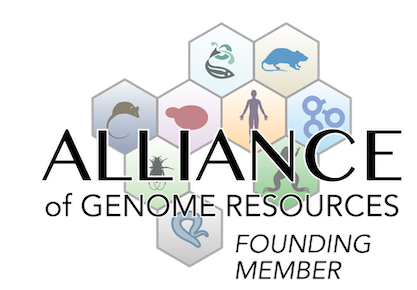mortality/aging
|
• mice die suddenly starting from 3 weeks of age, with 50% mortality by 5 weeks of age
• in most living mice with aortic dissection, the endothelial layer is connected and develops intimomedial tears and when the intimomedial tear progresses and forms an entry point with disruption of endothelial cells, the aortic wall collapses rapidly and mice die
• administration of clodronate liposomes to deplete macrophages every 3 days from 3 weeks of age results in no improvement in survival (clodronate is not sufficient to deplete MHCII+ or CCR2+ macrophages, but reduces adventitial macrophages)
|
cardiovascular system
|
• at 5 weeks of age, multiple intimomedial tears are seen in the aortas, ranging from breaks in the internal elastic lamina to nearly complete breaks throughout the medial layers with the presence of thin external elastic lamina
• aortic dissection aortas exhibit compromised extracellular matrix organization
|
|
• massive infiltrates in the adventitia are seen
|
|
• in most living mice with aortic dissection, the endothelial layer is connected and develops intimomedial tears and when the intimomedial tear progresses and forms an entry point with disruption of endothelial cells, the aortic wall collapses rapidly and mice die
• endothelial cells in the aorta are less elongated at 3 weeks of age and show reduced cell surface area and increased roundness from 1 week of age
• endothelial cell abnormalities precede the accumulation of immune cells in aortas
|
|
• disruption in the continuity of the medial layers is seen
|
|
• elastic laminae in the ascending aortas contain breaks, which are already evident at 1 week of age, and fragmentation of elastic laminae becomes more prominent with age
• elastic laminae of aortas are disrupted with loss of contacts with smooth muscle cells
• administration of clodronate liposomes to deplete macrophages every 3 days from 3 weeks of age results in no improvement in the quality of elastic lamina
|
|
• the orientation of smooth muscle cells is disorganized
|
|
• diameter of the aortic root is increased staring at 3 weeks of age
|
|
• dilatation of the ascending aorta is seen in mice at 5 weeks of age and the diameter of ascending aorta is increased staring at 3 weeks of age
|
|
• intrapleural hemorrhage is seen with massive blood attached to the ascending aorta and aortic arch but not in the abdominal aorta, indicating thoracic aortic dissection and rupture
• microscopic elastic damages are present before 3 weeks of age in aortas and intimomedial tears rapidly progress to aortic dissection and rupture
|
|
• tortuosity of the aorta is seen with 100% penetrance at 3 weeks of age
|
|
• transmitral Doppler flow velocity pattern shows reduced early diastolic to atrial systolic flow velocity at 5 weeks of age
• however, ventricular function shows normal ejection fraction
|
|
• intrapleural hemorrhage is seen with massive blood attached to the ascending aorta and aortic arch but not in the abdominal aorta, indicating thoracic aortic dissection and rupture
|
|
• mice show accumulation of inflammatory cells in the aorta (in the intima and adventitia), with an increase in myeloid cells (monocytes and macrophages) at 3 and 5 weeks of age
• some CD45 (leukocyte common antigen)-positive cells are seen in the adventitia in aortas at 1 week of age, with number increasing and being seen in the intima and adventitia, but not in the medial layer, at 5 weeks of age
• CD45+ immune cells are interwoven with endothelial cells in the intimal layer and some infiltrate into the medial layer at 3 weeks of age
• at 3 weeks of age, M1-like residential inflammatory macrophages (MHCII+) are seen, at 3 and 5 weeks, adventitial residential macrophages (cD206+Lyve1+) are seen, and at 5 weeks, bone-marrow derived inflammatory monocytes that differentiate into macrophages in the aortic wall (CCR2+) are seen
• the infiltrated immune cells in intimomedial tears are CD68+/MHCII+/CCR2+, whereas the cells in the adventitia are F4/80+/CD206+ macrophages
|
growth/size/body
immune system
|
• mice show accumulation of inflammatory cells in the aorta (in the intima and adventitia), with an increase in myeloid cells (monocytes and macrophages) at 3 and 5 weeks of age
• some CD45 (leukocyte common antigen)-positive cells are seen in the adventitia in aortas at 1 week of age, with number increasing and being seen in the intima and adventitia, but not in the medial layer, at 5 weeks of age
• CD45+ immune cells are interwoven with endothelial cells in the intimal layer and some infiltrate into the medial layer at 3 weeks of age
• at 3 weeks of age, M1-like residential inflammatory macrophages (MHCII+) are seen, at 3 and 5 weeks, adventitial residential macrophages (cD206+Lyve1+) are seen, and at 5 weeks, bone-marrow derived inflammatory monocytes that differentiate into macrophages in the aortic wall (CCR2+) are seen
• the infiltrated immune cells in intimomedial tears are CD68+/MHCII+/CCR2+, whereas the cells in the adventitia are F4/80+/CD206+ macrophages
|
integument
tight skin
(
J:370112
)
|
• tight skin is seen in all mice at 7 days of age
|
muscle
|
• the orientation of smooth muscle cells is disorganized
|
skeleton
Mouse Models of Human Disease |
DO ID | OMIM ID(s) | Ref(s) | |
| aortic dissection | DOID:0080685 | J:370112 | ||



 Analysis Tools
Analysis Tools
